What are the Easiest Fruits to Grow in Pots?
Finding the easiest fruits to grow in Pots was not as easy as I thought. Some require extensive care, others are prone to pests, and lots are just not simple & quick enough to grow.
That’s why I created a list of the 10 Easiest Fruits to Grow in Pots!
This ultimate guide will give you the easiest fruits to grow, why you should grow them, and even how to grow them.
Read THIS Before Growing Fruits in Pots
Knowing what hardiness zone you live in is critical to understanding the easiest fruits that can be grown.
It can be the difference between your fruit thriving and providing a bountiful yield or producing nothing and maybe even dying.
If you want to know what hardiness zone you live in review the map below:
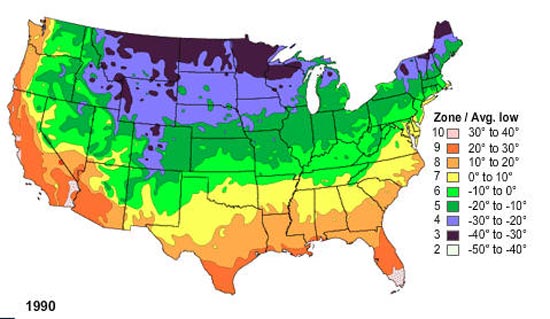
10 Easiest Fruits to Grow in Pots
#1. Apple Tree
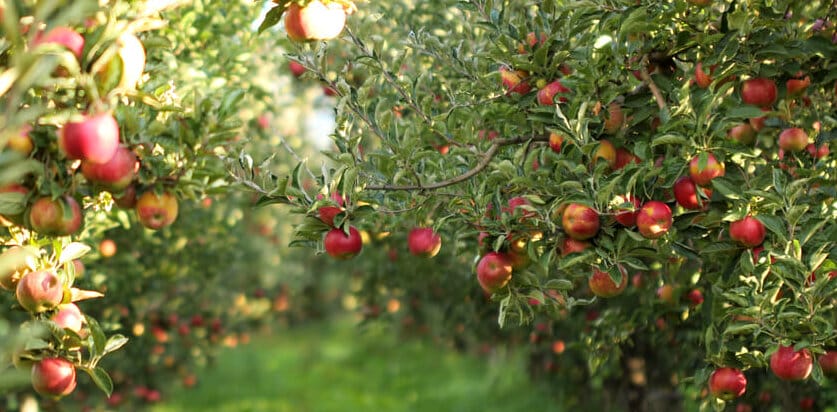
Popular Varieties: Honeycrisp, Red Delicious, Granny
Why Grow Apple Trees in Pots?
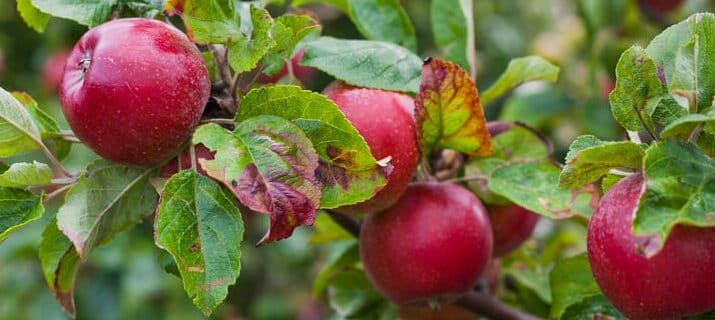
Cold Hardy:
- Apple Trees thrive in cold spring and cooler fall months. Unlike other fruits, flowers and fruit can grow even when there is snow or frost late into the spring.
Easy to Grow:
- Apple trees may be the easiest fruit to grow. You do not need to fertilize it, don’t need to water it, can be planted in any soil, and needs very little pruning if any.
Perfect for ANY Property:
- Apple Trees are perfect for any gardener’s yard. If you have a lot of space you can plant numerous apple trees in pots. If you have a little space you can still plant two apple trees in pots.
Heavy Harvest:
- Out of all the fruit trees on this list, apple trees have one of the heaviest harvests. Between late August through November, you can pick more apples than you’ll be able to eat.
THESE Could Harm Your Apple Trees
Pests:
- Deer, Rabbits, & Squirrels LOVE Lettuce. If left unprotected these pests will eat your fruit before it can even fully grow.
Insects:
- Out of all the fruit trees on this list, insects are most likely to attack apple trees. Whether it’s Japanese Beetles or Aphids, you will constantly have to spray and care for your apple tree to prevent insect infestation
Disease:
- Again, out of all the fruit trees on this list, Apple Trees are the most prone to disease. Blight & mold are just two of the diseases that can attack, harm, and sometimes kill your fruit trees in the spring or summer.
Additional Resources
Learn How To Grow Apple Trees HERE
#2. Pear Tree
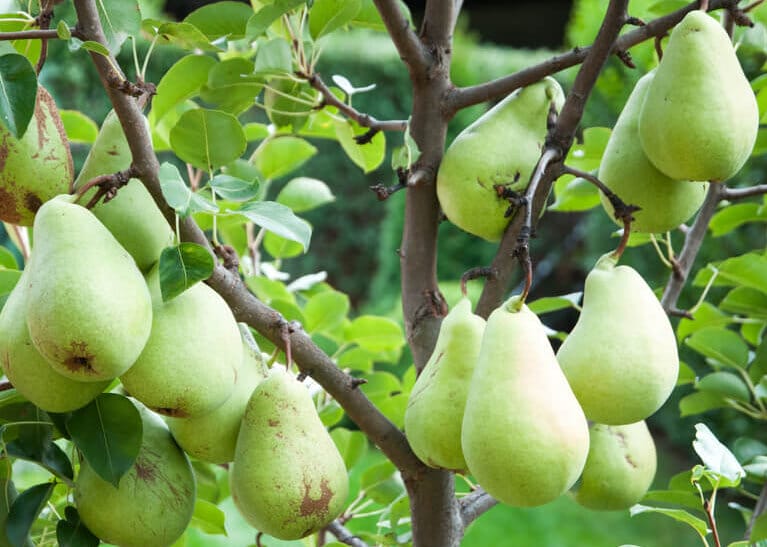
Popular Varieties: Barlett, Kieffer, Anjou, Bosc
Why Grow Pear Trees in Pots?
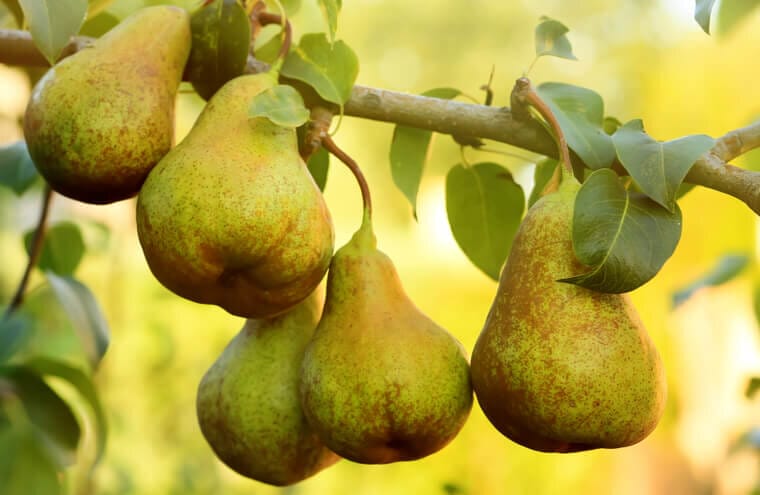
Cold Hardy:
- Pear Trees are another hardy fruit when it comes to cold. Pears are a perfect complement to apple trees, blooming earlier and bearing fruit earlier in the summer.
Heat-Resistant:
- Pear Trees is not only a great tree that is cold-hardy but also does amazing in droughts, high heat, and humidity. This makes it perfect to plant anywhere in your yard, regardless of the amount of sunlight it receives.
THESE Could Harm Your Pear Trees
Insects
- Like many other fruits, insects like aphids will attack and infest your pear trees. Unlike Apple Trees which can recover quickly, Pear Trees typically won’t.
Wet Conditions
- While pear trees do great in heat and cold, they can struggle with wet conditions. If the ground becomes too wet over winter and spring then there is a chance that root rot will happen, harming or killing your tree.
Additional Resources
Learn How To Grow Pear Trees HERE
#3. Plum Tree
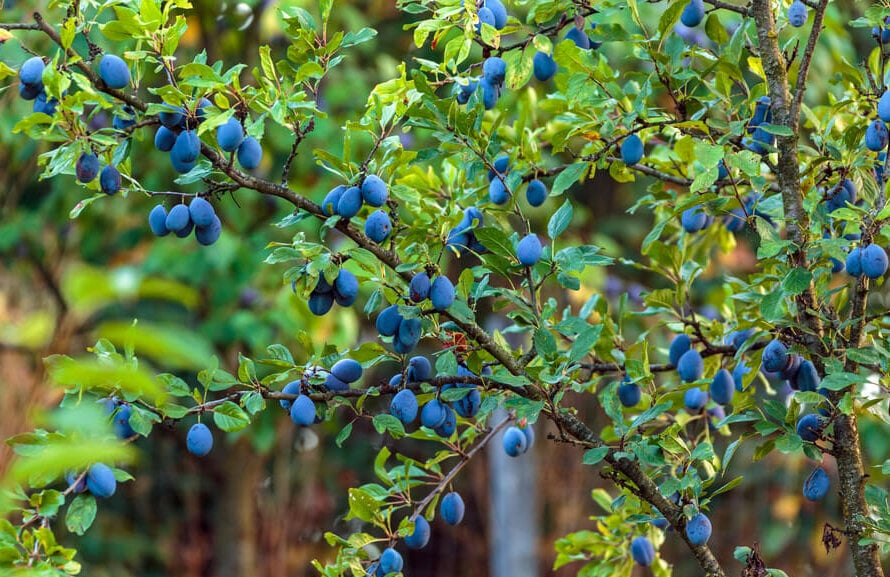
Popular Varieties: Damson, Fench, Friar, Japanese
Why Grow Plum in Pots?
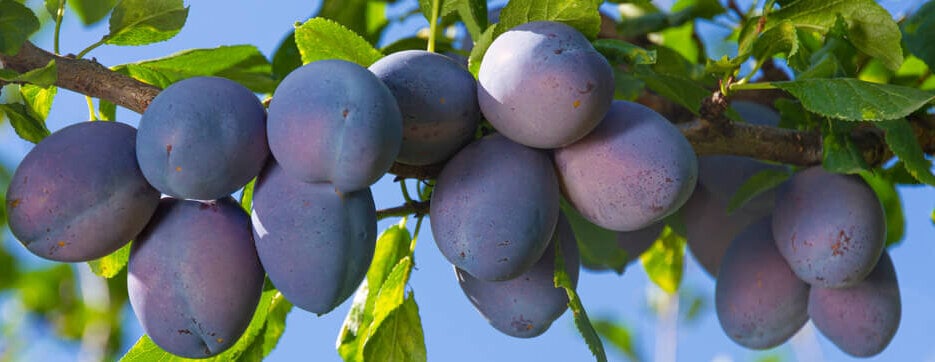
Thrives in the heat:
- While most fruit trees tolerate heat, plum trees thrive in it. This early summer fruit-producing tree will grow quickly with more plums when it has a warmer winter and spring.
Insect & Disease Proof:
- Plums are extremely hardy. Unlike every other fruit tree on this list, plum trees are resistant to almost all insects and every disease, making it the perfect fruit tree to grow in pots.
Perfect for Small Spaces:
- Apple, Pear, & Cherry Trees grow quite large. If you don’t have a big backyard this can pose a problem. But you don’t have to worry about this with plum trees, as they won’t grow more than 8 to 10 feet high and 6-8 feet wide making them perfect for gardening containers.
THESE Could Harm Your Plums Trees
Pests:
- Deer, Rabbits, & Squirrels come out of winter and become hungry in spring. One of the first plants they eat is plums. Whether protected or unprotected pests pose a risk to growing plums.
Wet Conditions:
- Like pear trees, plum trees don’t do well in wet conditions. It is recommended to plant this type of tree in an area of your yard with well-draining soil and long periods of direct sunlight.
Additional Resources
The biggest tip for having success growing plum trees is to prune them. Plum trees will take 5-6 years to bear fruit, but pruning your tree will promote tree growth and more plums.
#4. Raspberries

Popular Varieties: Anne, Caroline, Tulameen
Why Grow Raspberries in Pots?

Thrives in the heat:
- Raspberries love the heat. The hotter the beat. This makes this berry plant perfect for anywhere. And even better is that it requires little water, which means more time to spend on your other plants.
Large Yields:
- If you want a large yield of berries for a small plant then look no further than raspberries. One plant can yield an entire summer’s worth of edible raspberries. This makes raspberries the perfect berry plant for gardeners to grow.
Perfect for Small Spaces:
- Blackberries and blueberries can grow quite large. If you don’t have a big backyard this can pose a problem. But you don’t have to worry about this with raspberries and some types only grow 2 feet tall and 2 feet wide making them perfect for gardening pots.
THESE Could Harm Your Strawberries
Insects:
- Raspberries are the most insect-prone type of berry plant you can grow. Many insects can attack them, but the most dangerous are aphids and caterpillars. Make sure to apply the proper pesticide to protect your raspberries or they will die, as quickly as a day.
Wet Conditions:
- Like the other berries on this list, raspberries don’t do well in wet conditions. It is recommended to plant this type of tree in an area of your yard with well-draining soil and long periods of direct sunlight.
Additional Resources
If you want to have the most likelihood of success growing Raspberries it is recommended to prune, apply pesticide, and plant your raspberry plant with peat moss!
#5. Fig
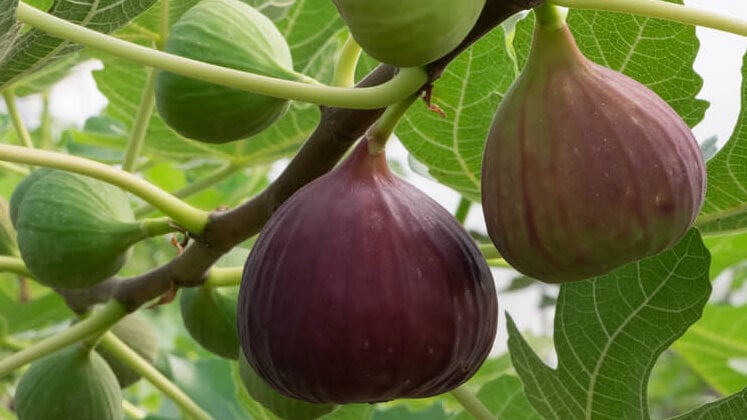
Popular Varieties: Chicago, Turkey, Brown
Why Grow Figs in Pots?
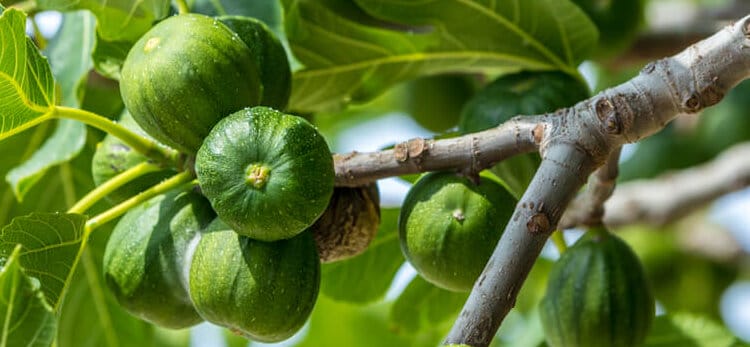
Pest-Resistant:
- The fig tree is the only fruit tree on this list that is truly pest-resistant. Deers hate fig trees, rabbits can’t reach the fruit, and squirrels and chipmunks find easier food elsewhere.
Perfect for Indoors & Outdoors:
- No other fruit on this list can be grown indoors and outdoors. Fig Trees can thrive outside, but most gardeners will grow them in a pot where they leave them outside during the summer months and bring them inside after the first frost of the year.
Easy to Grow:
- Once you plant your fig tree in a gardening pot there is nothing else you need to do. You don’t have to worry about insects or disease, only need to water it once a week, and you even don’t have to worry about pruning it for figs to grow.
THESE Could Harm Your Figs
Cold:
- While some types of fig trees can survive and do well in winter, most will become stunted and not produce fruit or may even die.
Drought:
- If you keep your fig trees in pots droughts will stunt and kill your tree. This is because fig trees in pots will dry out quicker than in the ground.
Additional Resources
Learn How to Prune Fig Trees HERE.
#6. Cherry
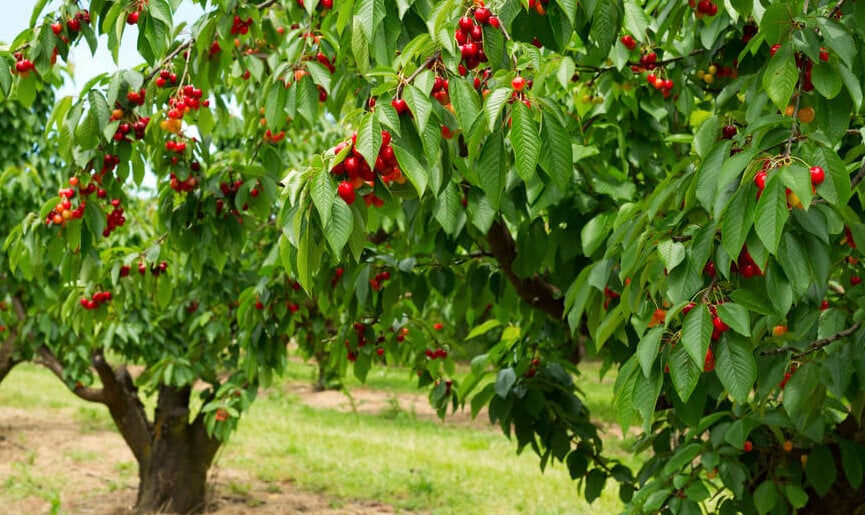
Popular Varieties: Bing, Van, Montmorency
Why Grow Cherry Trees in Pots?
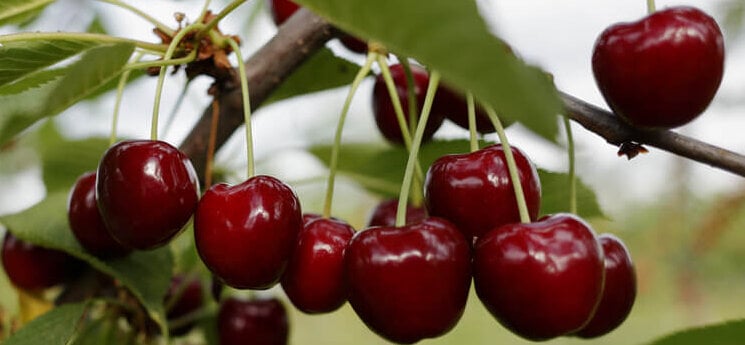
Thrives in the heat & cold:
- Cherries are another hardy fruit. Some varieties can be grown in cold weather and some can be grown in warmer weather.
Lots & Lots of Harvest:
- Cherries produce the largest harvest out of all the fruit trees on this list. While cherry trees don’t grow as tall as other trees they can sometimes yield up to 50 pounds of fruit in a season.
Amazing Cross-Pollinator:
- If you want a fruit tree that acts as a cross-pollinator then look no further than the cherry tree. It does great with crabapples and apple trees to name a few.
THESE Could Harm Your Cherry Trees
Birds:
- These pests will generally not harm your actual cherry tree. What they will do though is immediately eat cherries if you do not protect them with netting.
Cold & Wet Conditions:
- Cherry Trees also will quickly die if conditions are too wet or if the winters get too cold, making this one of the most difficult trees to care for every year.
Additional Resources
To have the most success growing cherry trees you should constantly prune, mulch, spray for disease and insects, and protect them against garden pests.
#7. Strawberries

Popular Varieties: Royal Sovereign, Albion, Rosie
Why Grow Strawberries in Pots?

Thrives in the heat:
Great for Vertical Gardening & Gardening Pots:
Quick Growing:
THESE Could Harm Your Strawberries
Cold:
- Strawberries do not tolerate cold weather well. While some varieties can survive cold weather, most will die if the winter temperatures drop consistently below 10 degrees Fahrenheit. You should always layer hay, leaves, or burlap over them in the winter.
Diseases:
Additional Resources
When planting strawberries you should always protect them with fencing or bird net to protect the flowers and berries from birds, chipmunks, and squirrels.
#8. Lime Tree
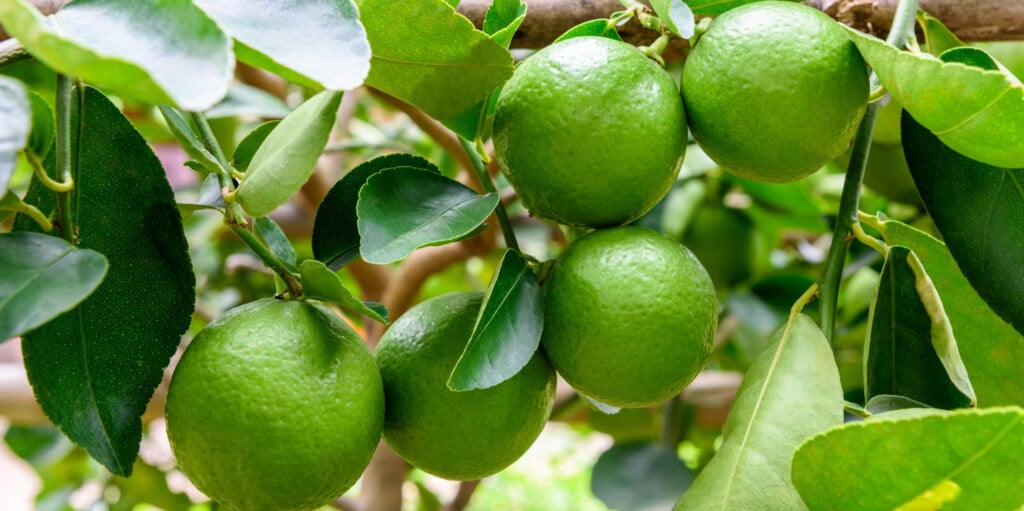
Popular Varieties: Persian, Kaffir, Hirt
Why Grow Lime Trees in Pots?
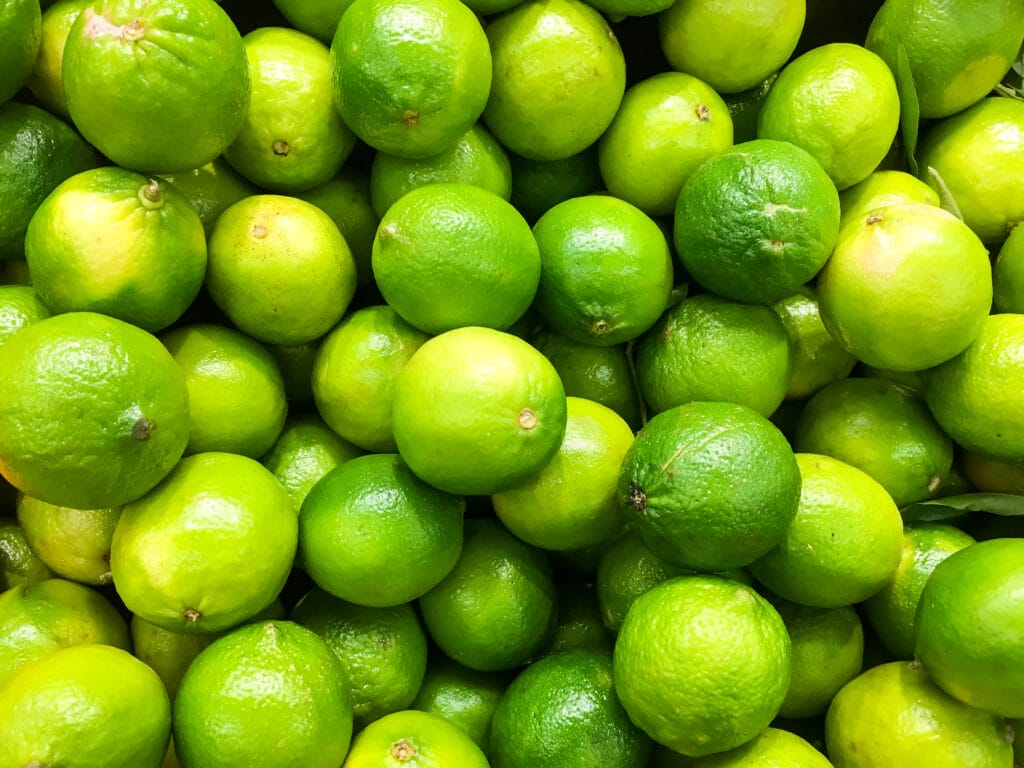
Loves Heat:
- Like other citrus trees on this list, Lime Trees love heat and thrive the warmer it gets. This is because they naturally have grown in warmer weather climates. And best of all is that you need to water or care for them very little to have success.
Great for Any Property:
- Lime Trees can grow successfully in pots and in the ground. If you want to provide less maintenance and care for your lime tree then growing it in a pot will allow you to do that!
THESE Could Harm Your Lime Trees
Cold:
- Lime trees are the most sensitive fruit tree on this list to cold weather. If temperatures drop below 50 degrees Fahrenheit then your tree won’t grow or produce fruit. If temperatures drop below freezing your lime tree will die.
Cold Weather:
- Like most nectarine and peach trees, apricot trees do poorly in the cold. In fact, they have the least likelihood of almost any fruit tree on this list of surviving winter if not wrapped in burlap or another heat retaining material.
Additional Resources
Learn How to Grow Lime Trees in Pots HERE
#9. Mulberry Tree
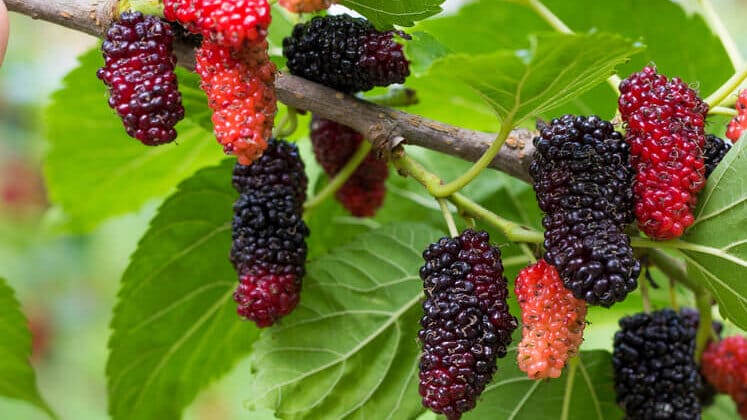
Popular Varieties: Black, White, Red
Why Grow Mulberry Trees in Pots?
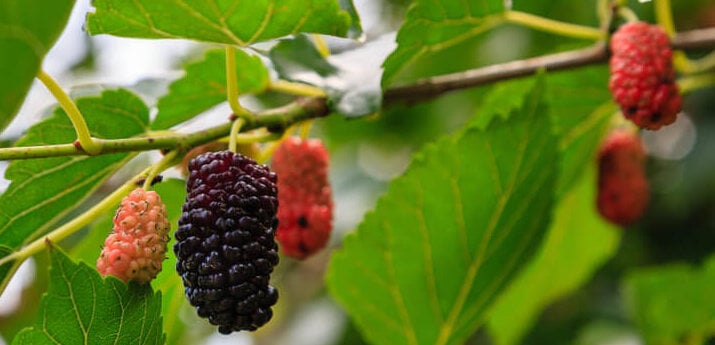
Thrives in Almost Any Condition:
- While you may not be very familiar with the Mulberry Tree, it is an excellent choice to grow in almost any condition. You can plant it with other trees, by itself in a field, among weeds, or even in a garden and it will quickly grow and bear fruit.
Small Yards:
- The mulberry tree is so versatile because of its size that you can plant it anywhere in pots. Whether it’s in a small space next to your house, in the corner, or in your garden the mulberry tree is perfect for all fruit tree growers.
THESE Could Harm Your Mulberry Trees
Garden Pests:
- When growing mulberry trees you will need to protect them from birds. While birds won’t harm the tree itself they have been known to quickly devour the fruit before they even ripen.
Additional Resources
Mulberry trees will grow plenty of fruit by themselves, but to have four to five times the amount of mulberries you should plant them next to another type of mulberry tree to promote cross-pollination.
#10. Lemon Tree
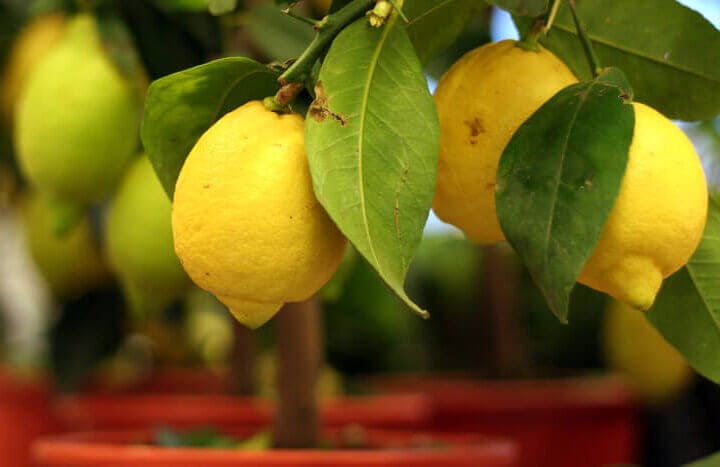
Popular Varieties: Meyer, Lisbon, Ponderosa
Why Grow Lemon Trees in Pots?
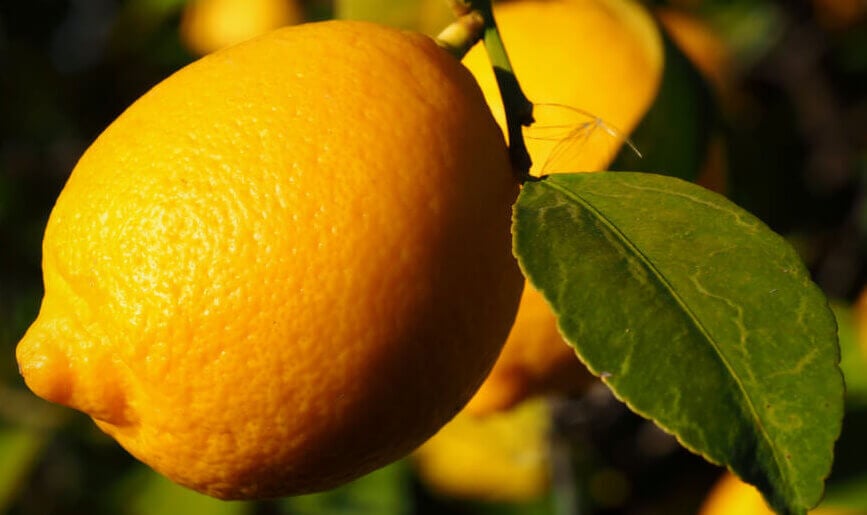
Loves Heat:
- Out of all the fruit trees on this list, lemons will thrive the most with heat. This is because they naturally have been grown in warmer weather climates. And best of all is that you need to water or care for them very little to have success.
Perfect for Pots:
- Lemon Trees can only grow in pots. If you want a fruit tree that can easily be moved from indoors to outdoors, kept indoors all year, or even just as an ornamental tree then look no further.
THESE Could Harm Your Lemon Tree
Cold:
Lemon trees are the most sensitive fruit tree on this list to cold weather. If temperatures drop below 50 degrees Fahrenheit then your tree won’t grow or produce fruit. If temperatures drop below freezing your lemon tree will die.
Additional Resources
Learn How to Grow Lemon Trees in Pots HERE
Common Growing Factors of Fruits in Gardening Pots
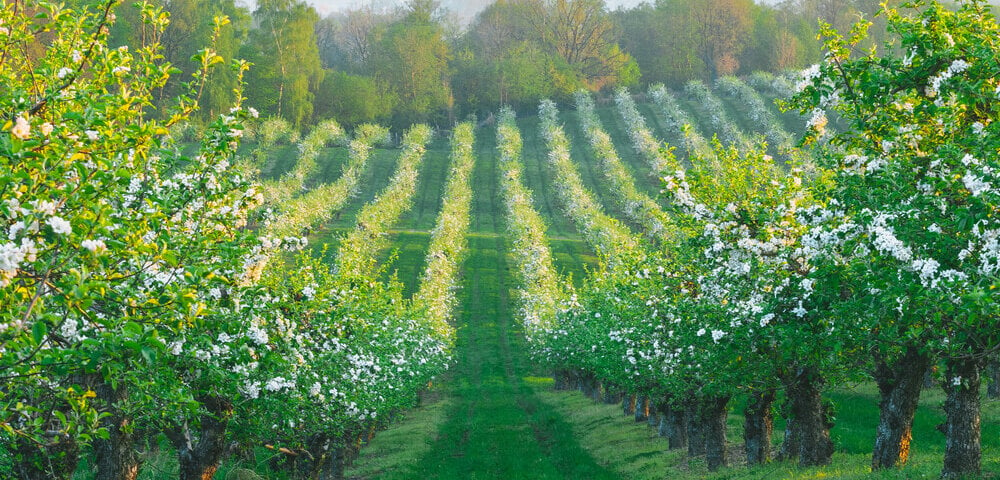
As a reminder, the below factors are common for the Easiest Fruits to Grow in Pots:
- Thrives in Heat & Drought
- Thrives in Cold
- Can Grow Anywhere in your yard
- Hardy against Pests & Insects
- Require little maintenance
- Bear heavy fruit